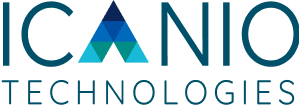Self-hosted JIRA Data Center on AWS
Designed and implemented a cost-efficient, high-availability JIRA Data Center solution self-hosted on AWS, migrating from a costly cloud licensing model to an optimized infrastructure.
Platform Developed


Overview
This project involved deploying a cost-efficient, high-availability JIRA Data Center solution self-hosted on AWS EC2/CloudFormation to replace expensive JIRA Cloud licensing. The architecture uses an Application Load Balancer and Amazon RDS Multi-AZ to ensure robust performance and continuous operations.
Problem
- The client wanted to reduce substantial JIRA Cloud licensing costs while maintaining necessary performance, security, and scalability.
- The objective was to transition to a self-hosted JIRA Data Center on AWS to gain greater cost efficiency and better control over the application environment.
Solution
- Infrastructure as Code Deployment: Deployed JIRA Data Center on AWS EC2 instances using CloudFormation templates for automated and repeatable infrastructure provisioning.
- High Availability Setup: Configured an Application Load Balancer with SSL, Auto Scaling, and Amazon RDS (PostgreSQL) with Multi-AZ for high availability (HA).
- Shared Storage & Monitoring: Implemented Amazon EFS for shared storage across nodes and integrated AWS CloudWatch for real-time performance monitoring and logging.
- Backup and Security: Integrated AWS Backup for automated backups and leveraged AWS security best practices (VPC, WAF) to enhance the security posture.
Key Business Outcomes
- 50% Cost Reduction: Eliminated dependency on expensive JIRA Cloud licensing with the self-hosted Data Center model.
- High Availability & Scalability: Implemented an Auto-scaling infrastructure that ensures high performance and service uptime.
- Enhanced Security & Compliance: Integrated native AWS security best practices, providing greater control and compliance capabilities.
Technology








